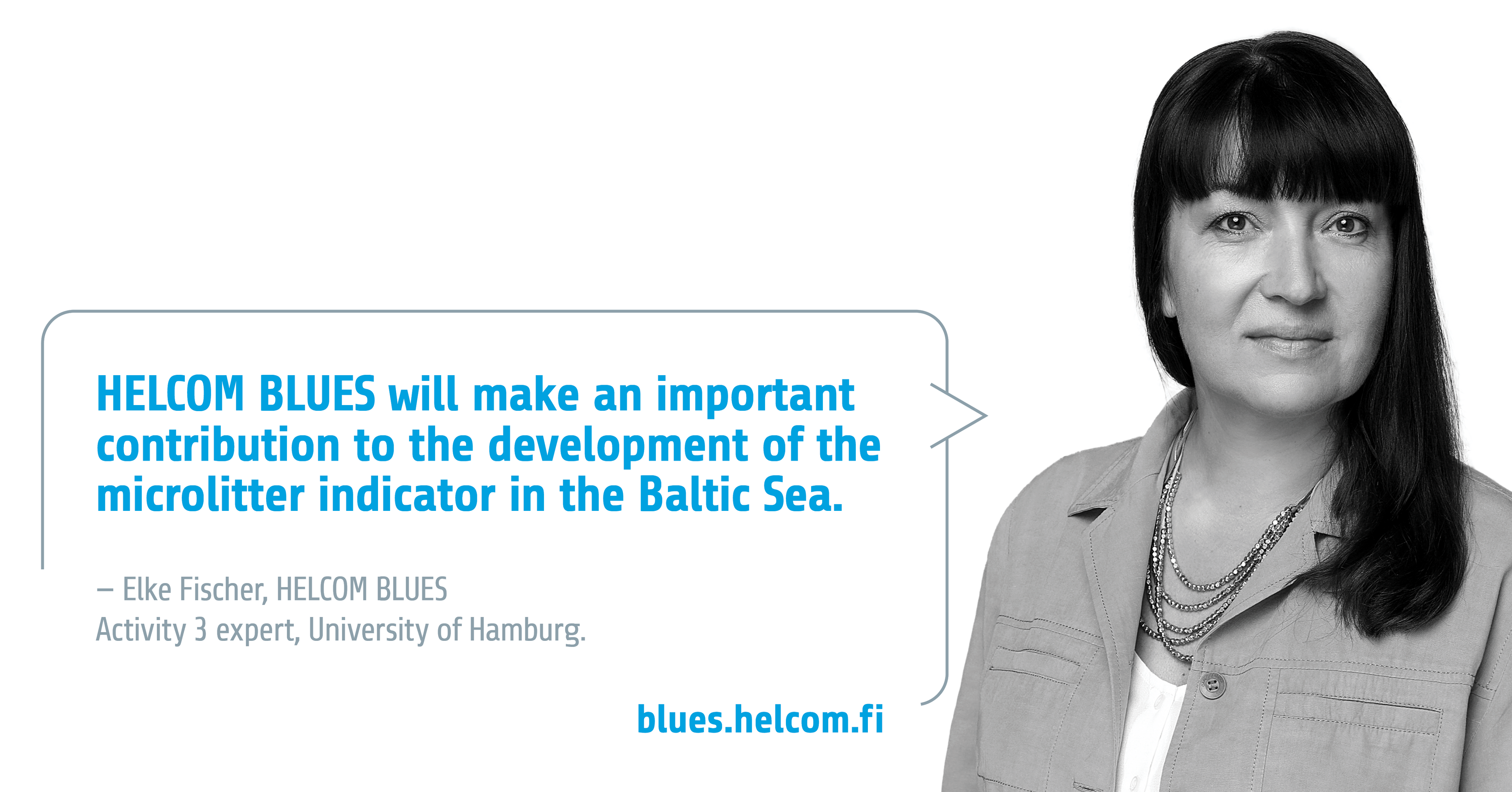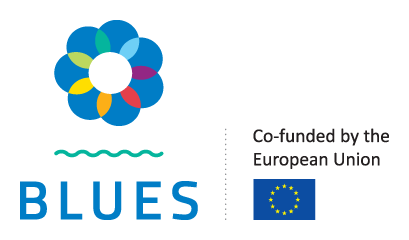
Elke Fischer leads Activity 3.2 on the progress development of microlitter indicator. She is a senior researcher at the University of Hamburg where she is also head of the working group for (micro)plastic contamination. She is also a member of the HELCOM Expert Group on Marine Litter (EG-Marine litter) and the EU Technical Group on Marine Litter (TG-Litter).
What is your Activity/Task in HELCOM BLUES all about? What main challenges and/or pressures on the Baltic Sea does it try to solve?
Within the HELCOM BLUES project me and my working group are part of the Activity 3 on “Support for and harmonisation of regional work on Descriptor 10 (marine litter). Herein, I am leading the subtask 3.2 on “Progress development of microlitter indicator”.
Together with Marta Ruiz form HELCOM and our Latvian colleagues Ieva Putna-Nimane and Marta Barone we address microlitter in both surface water and seabed sediments. The focus of the HELCOM BLUES working group at the University of Hamburg (Matthias Schwarz, Madina Dolle and Laura Polt and me) is to further develop the microlitter indicator in seabed sediments.
The particular challenge of the microlitter indicator is that only few HELCOM countries have yet established a respective monitoring programme. Therefore, data on microlitter in seabed sediments that would allow an assessment of whether the status of our marine environments is improving or worsening over time are still insufficient. Furthermore, no harmonised protocol on how microlitter is to be monitored in our marine ecosystems has been established. The high variability of methods currently in use or planned bears the risk of generating non-comparable data that do not provide a robust data set for statistical analysis.
What are the planned outcomes of your specific BLUES Activity/Task?
A central task and outcome of Activity 3 on microlitter is the development of draft guidelines that can be implemented by all HELCOM countries and that are compatible with EU-level monitoring requirements from MSFD and harmonized with strategies within other regional sea conventions. Here we are not aiming to provide one strict recipe to be followed by all but to provide kind of a common framework with reliable options for sampling, analysis and data generation for microlitter in seabed sediments that are feasible to all HELCOM countries.
The major outcome of Activity 3.2 is to draft guidelines on sampling, sample analysis and data reporting of microlitter in seabed sediments. For this purpose, we already conducted a survey on currently implemented or planned monitoring strategies and monitoring stations. Based on the data generated in this way and in discussion with national microlitter experts, draft guidelines are drawn up which reflect existing approaches, are feasible for all HELCOM countries and provide the greatest possible harmonization with developments at EU level and other regional sea conventions.
Furthermore, a sound literature analysis and a data call will be used to evaluate which data are already available and in which quality, that could potentially serve as an initial basis for an assessment of the current status.
How will your BLUES Activity/Task benefit your organization in particular and the Baltic Sea in general?
The HELCOM BLUES project gives us the great opportunity to address the identified problems with experts from HELCOM countries and to find participatory and transparent solutions. It is highly useful and valuable here to build an ongoing and active HELCOM network on the topic of microlitter.
My working group and me personally benefit from this very much on a scientific and personal level. It is highly valuable to hear and discuss regionally specific challenges but also to get acquainted to other concepts, to learn from each other and ultimately to identify a feasible and reasonable solution for all.
A project-specific advantage of HELCOM BLUES is the highly interdisciplinary structure of the project. Already during the kick-off workshop, I very much appreciated and for the first time clearly perceived how important and valuable it is to think outside the box and to consider the views and arguments of colleagues from the other subprojects of HELCOM BLUES that address f.ex. biodiversity and underwater noise, and also aspects of data management.
We are convinced that with our work in HELCOM BLUES we can make an important contribution to the development of the microlitter indicator in the Baltic Sea and through this, to MSFD. Our aim is to bring all countries together, to work on common solutions and synthesis of already existing approaches and datasets, and to create a resilient basis for the future monitoring of microlitter.
